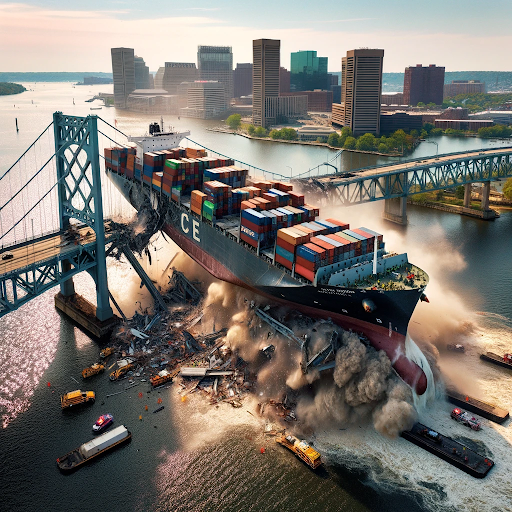Loose Wire Fault Linked to Dali Bridge Strike and Collapse

The National Transportation Safety Board in the United States reported Tuesday that a single loose wire aboard the 300 meter containership Dali triggered an electrical failure that caused the vessel to drift and hit Baltimore’s Francis Scott Key Bridge, resulting in the bridge’s collapse and the deaths of six road workers.
During a public meeting at NTSB headquarters, investigators explained that the loose wire in the ship’s electrical network led a breaker to open unexpectedly. This initiated a chain of events that produced two power losses and caused the ship to lose both propulsion and steering as it approached the bridge on March 26, 2024. Investigators determined that labeling wrapped around the wire kept it from fully seating in a terminal block spring-clamp gate, which created a poor connection.
Following the first blackout, the Dali began turning to starboard toward Pier 17 of the Key Bridge. The investigation found that the pilots and bridge team attempted to correct the ship’s course, but with propulsion lost so close to the structure, their efforts were unable to prevent the impact. A large section of the bridge fell into the water, and parts of the pier, deck and truss spans collapsed onto the vessel’s bow and front container stacks.
Eight people were working on the bridge at the time: a seven-person road crew and an inspector. Six of the highway workers were killed. According to the NTSB, the swift actions taken by the Dali pilots, shoreside dispatchers and the Maryland Transportation Authority to halt traffic on the bridge prevented further casualties.
“Our investigators routinely accomplish the impossible, and this investigation is no different,” said NTSB chairwoman Jennifer Homendy. “The Dali, at almost 1,000 feet, is as long as the Eiffel Tower is high, with miles of wiring and thousands of electrical connections. Finding this single wire was like hunting for a loose rivet on the Eiffel Tower.”
The NTSB concluded that the absence of protective measures to lessen the Key Bridge’s susceptibility to impacts from increasingly large ocean-going ships also contributed to the collapse and the resulting fatalities. When the Japan-flagged Blue Nagoya lost propulsion and struck the Key Bridge in 1980, the 118 meter vessel caused only limited damage. In comparison, the Dali is ten times larger.
As part of its investigation, the NTSB published an initial report in March outlining the vulnerability of bridges across the country to collisions with large ships. The report stated that the Maryland Transportation Authority and many other bridge owners appeared unaware of the potential hazard posed by vessel strikes, despite long-established guidance from the American Association of State Highway and Transportation Officials advising owners to conduct such evaluations.
The NTSB issued letters to 30 bridge owners identified in the report, urging them to assess their structures and create mitigation plans if necessary. All recipients have since replied, and updates on each recommendation are available on the NTSB’s website.